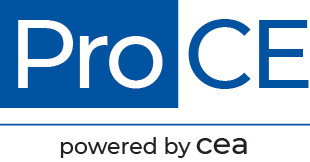Thank you for your interest in CCO content. As a guest, please complete the following information fields. These data help ensure our continued delivery of impactful education.
Become a member (or login)? Member benefits include accreditation certificates, downloadable slides, and decision support tools.

Professor
University of Pittsburgh School of Pharmacy
Clinical Pharmacist, Cardiology
UPMC Presbyterian Hospital
PGY2 Cardiology Residency Program Director
Pittsburgh, Pennsylvania
James C. Coons, PharmD, FCCP, BCCP, has conducted contracted research for Pfizer and United Therapeutics; received consulting fees from Alnylam and Bristol Myers Squibb.

Nurse Practitioner
Pulmonary Hypertension Program
University of Texas Southwestern Medical Center at Dallas
Dallas, Texas
Martha Kingman, DNP, FNP-C, has conducted contracted research for and received consulting fees from Acceleron, Actelion, and United Therapeutics; received consulting fees from Altavant, Caremark, CiVi Biopharma, Gossamer Bio, and Liquidia; conducted contracted research for Reata and Sonavie.

Kim A. Eagle Endowed Professor of Cardiovascular Medicine
Associate Chief Clinic Officer
Cardiovascular Medicine, Internal Medicine
University of Michigan
Ann Arbor, Michigan
Vallerie McLaughlin, MD, has received consulting fees from Actelion/J&J, Bayer, and United Therapeutics.
In this commentary, James C. Coons, PharmD, FCCP, BCCP; Martha Kingman, DNP, FNP-C; and Vallerie McLaughlin, MD, answer questions about IV therapies from a ProCE webinar on the management of pulmonary arterial hypertension (PAH). Slides from the webinar are also available for self-study or to use in your noncommercial presentations.
What is the difference between epoprostenol IV and treprostinil SC?
James C. Coons, PharmD, FCCP, BCCP:
Epoprostenol IV and treprostinil SC are each parenteral prostacyclin options for treating high-risk patients with PAH.
Epoprostenol is more potent, has a quicker onset, and shorter half-life compared with treprostinil (SC or IV). Epoprostenol has also been studied in the sickest group of patients.
For these reasons, some providers may prefer epoprostenol for patients at highest risk where the effect of the medication is needed more urgently.
By contrast, treprostinil SC would be more appropriate for patients who are either unable to manage the needs of IV therapy (including the pump itself, mixing the medication, etc) or who are susceptible to line-related bacterial infections.
How quickly should epoprostenol IV be titrated up on a new start? The prescribing information states to increase by 2 ng/kg/min every 10-15 minutes, but that seems fast.
Martha Kingman, DNP, FNP-C:
Although the prescribing information says to increase the epoprostenol IV dose by 2 ng/kg/min every 10-15 minutes, it’s not common practice and I strongly recommend against it. I find that patients experience excessive adverse events if the dose is increased that quickly.
In the majority of cases, we admit patients and initiate the epoprostenol infusion at 2 ng/kg/min. We might increase to 4 ng/kg/min that evening and then to 6 ng/kg/min the next day. Patients generally go home at 7 or 8 ng/kg/min. At home, patients increase by 1 or 2 ng/kg/min once or twice weekly until they reach their goal dose. This plan is individualized based on how well they tolerate adverse events.
The exception is if we have patients who are critically ill. For instance, if they’ve been transferred to our ICU at functional class IV with severe right heart failure, we might have to titrate up faster to try to get them stabilized.
But, in general, we increase much more slowly than the 2 ng every 10-15 minutes listed in the prescribing information.
Vallerie McLaughlin, MD:
One of the important things I emphasize to patients initiating prostacyclin is that they must learn how to mix the medication and operate the pump while they are in the hospital—we want them to be confident when they leave. And we don’t want them to be so symptomatic from a headache that they can’t concentrate on learning these skills.
Our approach is very similar to what Dr. Kingman describes. If the patient is critically ill, sometimes we need to increase the dose a lot quicker. But, generally, we start at 2 ng/kg/min and then we go up by 2 ng/kg/min a day. The patient often leaves the hospital on 6 ng, or sometimes a little higher or lower.
Should an inpatient starting epoprostenol IV also start an endothelin receptor antagonist (ERA) and phosphodiesterase type 5 (PDE5) inhibitor at the same time?
Vallerie McLaughlin, MD:
In our practice, a patient with high-risk features who is started emergently on IV therapy as an inpatient generally is also treated with both an ERA and PDE5 inhibitor as well.
This is consistent with the European Society of Cardiology/European Respiratory Society Guidelines, the Sixth World Symposium on Pulmonary Hypertension, and the American College of Chest Physicians Guidelines, all of which include parenteral prostacyclins as part of initial combination therapy for high-risk patients, such as those with WHO functional class IV PAH.
Are the IV medications for PAH meant for lifelong therapy?
Vallerie McLaughlin, MD:
I always explain to patients that we intend these medications as lifelong therapy. In the current era, by the time patients begin prostacyclin, they already have persistent symptoms and high-risk features despite oral therapies.
It’s the rare exception that we would discontinue an IV or SC prostacyclin, so I want the patient to understand that this is something they need to commit to lifelong.
However, I also tell patients that research on new therapies continues. Theoretically, in the future a treatment may be approved that is very effective that we could potentially wean them off.
Share Your Thoughts
How do you choose among PAH treatments? Join the conversation by posting in the comments section.
For more frequently asked questions, see our program on PAH here.
Join the Conversation

Contact Clinical Care Options
For customer support please email: customersupport@cealliance.com
Mailing Address
Clinical Care Options, LLC
12001 Sunrise Valley Drive
Suite 300
Reston, VA 20191
You are now leaving the CCO site. The new destination site may have different terms of use and privacy policy.